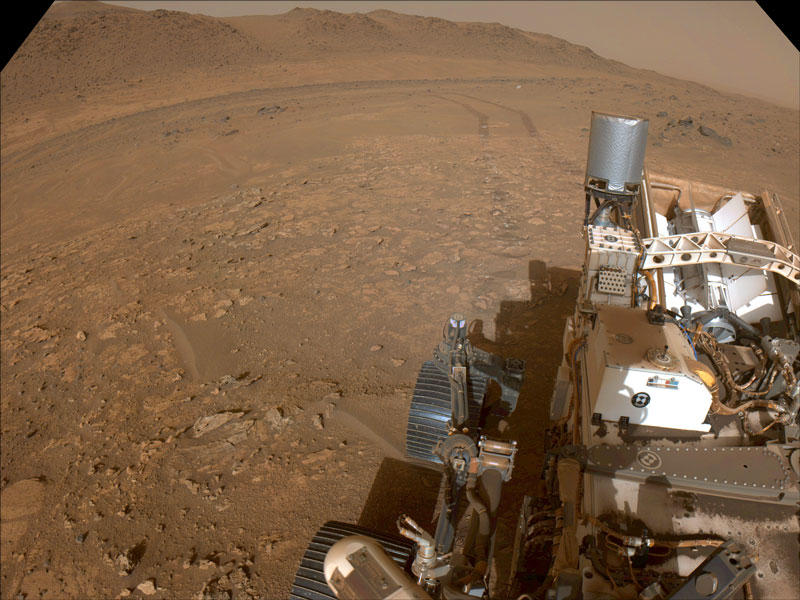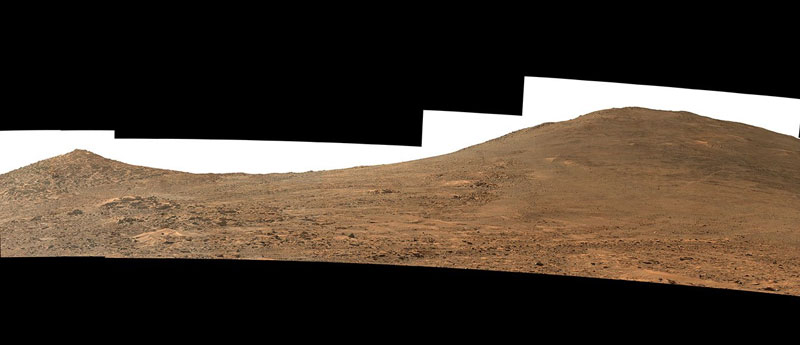On August 19, 2024, the NASA Perseverance rover team planned to begin lifting the rover to the shore of a prehistoric lake in the Jezero Crater. The rover must rise to a height of 300 m above the bottom of the crater and, in combination, the bottom of the lake that was there billions of years ago. Up above, scientists hope to discover exposures of the oldest Martian rocks to the surface to help shed light on the geology of the Red Planet.

A look back at the path traveled. Image source: NASA
The Perseverance rover descended to the bottom of Jezero Crater on February 18, 2021. It is highly likely that a river flowed into the prehistoric lake in this place. The rover examined the possible lake bottom and areas of the river delta, where it took 22 rock cores, including the most valuable sediment samples. It is in sedimentary rocks, which form in the presence of large volumes of water, that there is the greatest likelihood of finding traces of biological life as we know it on Earth.

Panorama of the ascent site
Now it’s time to climb to the shore of the “lake”, where the Mars orbiter previously discovered probable signs of faults from geothermal activity in ancient times. Perseverance will take new cores there. The rover will climb the inclined edge of the crater on autopilot, avoiding areas with an inclination of more than 23°. A tilt of more than 30° is considered dangerous for the rover, which could cause it to capsize. The approximate route for the ascent was determined from satellite images, but everything will be decided on the spot by the rover’s automation.

Final destination: Aurora Park
At the upper rim of the crater, the rover team expects to make many new discoveries about both the geology of Mars and the possibility of life there previously. This will not be the end of the Perseverance program. If nothing happens to the rover, after exploring two sites on the upper rim of the crater, it will set off again.